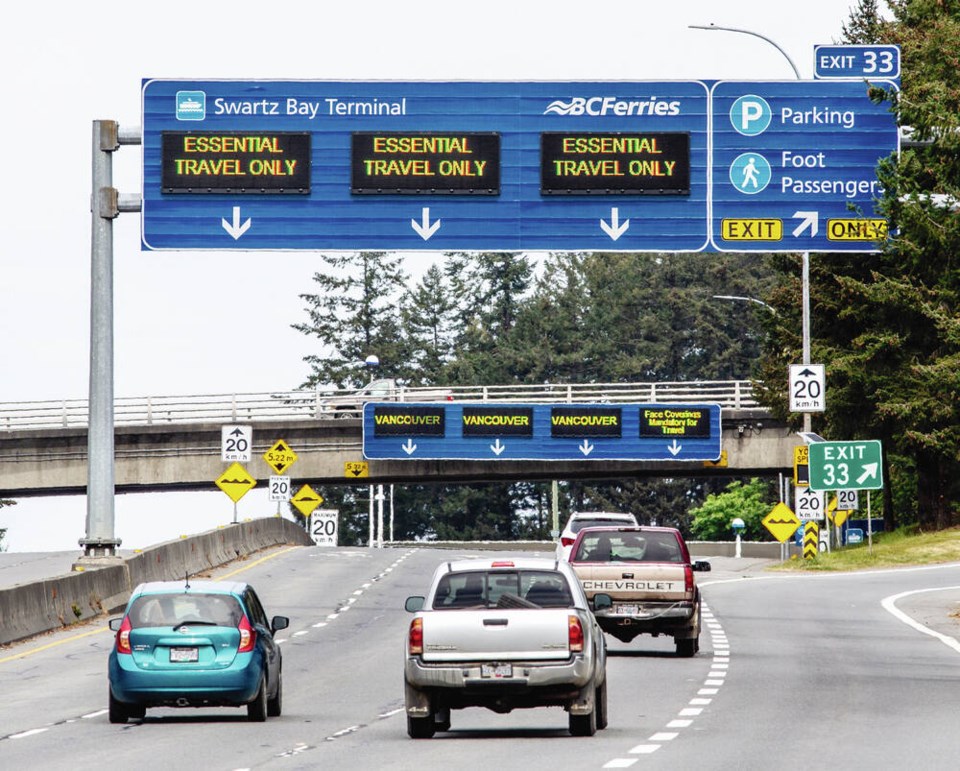The driving season is nearly upon us and, in practical terms, it’s our first post-COVID spring. That’s bound to mean a lot more traffic out there as the weather improves.
So this would be a good time to re-adopt some driving resolutions — the goal is to give police traffic collision analysts, the ones who investigate the worst of the carnage on our roads, the summer off.
Here’s a few ideas to help that happen.
Resolve not to be distracted. Doing something other than driving when you’re behind the wheel causes about 8% to 10% of collision fatalities. So phones down, keep quarter-pounders in the bag, and apply make up in the parking lot. Driving requires 100% of your attention.
Read the road ahead. Keeping that three to four second gap behind the car in front is always important, but it’s even safer to scan ahead by eight to 10 seconds. Why are others suddenly changing lanes, or is there a large slow-moving truck way up ahead? Knowing what’s out in front increases your options to change lanes safely, avoid emergency braking and gain precious time to manoeuvre out of danger.
Resolve to never be impaired. Everyone knows the dangers of impaired driving. The stats are pretty consistent — around 50% of people seriously injured or killed in collisions had alcohol or drugs in their system. Don’t drive with a drunk and report impaired driving immediately.
Resolve to not drive when you’re tired. Youtube is full of inexplicable dashcam incidents — drivers going straight into bridge abutments or just gradually veering off a highway at speed. Most of these occur when drivers fall asleep. There’s also “microsleeping”, meaning that every part of you is technically awake, except your brain. Eyes aching? Head heavy? Can’t remember the past couple of minutes? Time to pull over and rest.
Resolve to honestly assess your mental and physical abilities to drive. Be honest about how age might now affect you. How good is your physical and medical capacity to operate a complex piece of machinery? Accept feedback earnestly from others who maybe see things you can’t — or won’t. If people won’t drive with you anymore or you’re regularly receiving horn honks, shaking fists or the finger, it may be time to reassess.
Resolve to wear your seatbelt. I wrote a while ago about the number of people killed simply because they were thrown out of or around the inside of their vehicle during a crash. Seat belts keep you safer — full stop. I like this one from ICBC: “With a 50 km/h head-on crash … an unrestrained 25 pound child will be thrown forward with the same force as the weight of a 1200 pound baby elephant.” Buckle up.
Resolve to not run lights. Sixty per cent of all crashes in B.C. happen at intersections. Blowing a red light is either a product of inattention or aggressiveness. North America wide, the stats are up for red light infractions. Remember, it’s the same penalty in B.C for running a yellow light. The law says you must stop for a yellow, unless it’s unsafe to do so.
Resolve to not be aggressive. If your actions intentionally cause someone to brake, swerve or otherwise avoid you, give yourself a time-out. You are being the worst type of driver on the road. Our system lays down some pretty heavy penalties for this kind of behaviour and rightly so.
Glove Box: Michael wrote last week that we could all be safer if drivers gain a better perception of where the outer edges of their own vehicle stop or start. I agree with him, particularly about those drivers who can’t figure out how much room they have on their right hand side. Like Michael, I often see drivers going way too close to the centre line, or in some cases, over the centre line, probably because they don’t properly perceive their distance from things on the right side of their vehicle.
This can be overcome with practice, coaching and using objects in your vehicle as a site guide. Back in the day, I was shown that by visually lining up the hood ornament (Remember those?) with the right hand edge of the roadway or painted shoulder line you were keeping your car pretty much in the centre of your lane. Hood ornaments are gone, but radio antennae, tips of windshield wipers, or those little headlight sensor bumps on the top of your dashboard can work just as well.
Staying centred in your lane is one method to avoid the dreaded head-on crash. Being too near or over the centre line allows for virtually no reaction time to escape the worst type of all vehicle collisions.



